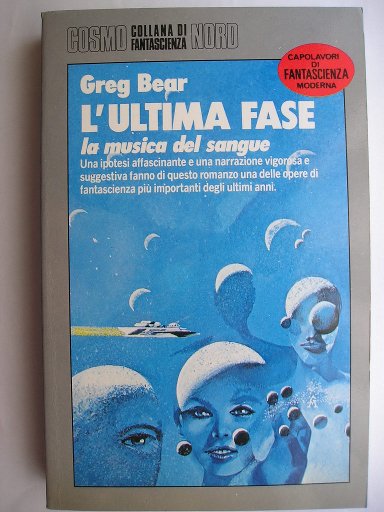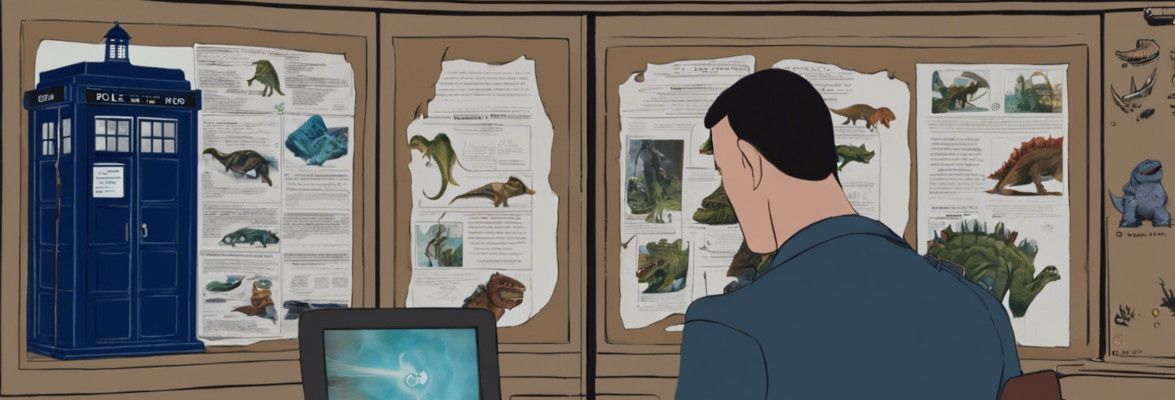
The novel “Blood Music” by Greg Bear was published for the first time in 1985. It’s the expanded version of a novelette published in 1983 that won the Hugo and Nebula awards.
Vergil Ulam is a researcher who works for a company that carries out advanced biological developments. He’s brilliant but has a tendency to cut corners and he isn’t bothered by potential ethical problems when he wants to obtain results. When one of his experiments that aims at producing microorganisms capable of learning is discovered, Vergil is fired. He’s ordered to destroy the products of his experiment but he manages to inject the altered lymphocytes in his own body.
Within Vergil’s body, the microorganisms not only replicate but they start to evolve, explore his organs and after some time modify them. At the same time, they develop a form of intelligence and manage to communicate with him through a kind of blood music. When Vergil reveals what’s happening to Edward Milligan, a doctor friend, it’s too late because the lymphocytes, which he calls noocytes, have infected Vergil’s girlfriend and who knows how many other people.
The original novelette is told from the perspective of Edward Milligan, who tells how the noocytes evolve and modify the Vergil Ulam’s body. The story focuses on the theme of nanotechnology and specifically on the noocytes and the DNA as a program that can be modified.
The theme of the scientific experiment gone wrong is very classic, so much that Frankenstein is mentioned in “Blood Music”, Greg Bear reinvents it using modern biotechnology.
In the novel, a revised version of the original novelette occupies almost the entire section titled “Metaphase”. The novel is divided into six parts titled “Interphase” (Prologue) “Prophase”, “Metaphase”, “Anaphase”, “Telophase” and again “Interphase” (epilogue), the names of the most important phases of the cell cycle.
In the novel, Vergil Ulam’s story is expanded telling the beginning of the unique infection he brings to himself injecting the noocytes he produced in his own body. The story of the infection is developed describing what happens when it spreads in North America with the noocytes creating a kind of sentient community.
The novel is all narrated in third person but from the point of view of various characters. Some sections deal with the evolution of this kind of epidemic caused by the spread of the noocytes, other parts are focused on the point of view of a single character. After the first part, which is basically Vergil Ulam’s story, there’s another one that follows Michael Bernard, another researcher who got infected by the noocytes and flees to Germany to become a guinea pig for the study of the noocytes.
Inevitably, some parts of “Blood Music” are slower and others faster paced. There are several characters but they appear only in a part of the novel so very few of them are actually developed.
The last part of “Blood Music” expands the themes of the novel. Most of the story concerns the biological development of the noocytes but at some point the noocytes community decide to change their own world with enormous consequences for humanity. The main theme is no longer biology but physics, with advanced speculations on the nature of consciousness.
“Blood Music” brought great fame to Greg Bear and when the novel was published he received important comparisons that were more or less appropriate. Sometimes, the novel is inserted into the cyberpunk genre for the use of nanotechnology but it lacks the typical dystopian vision of that genre.
Greg Bear was compared to J.G. Ballard for the catastrophic theme of several of his works. “Blood Music” is, however, all things considered optimistic because despite the chaos brought by the noocytes Bear sees them as an instrument for an evolutionary leap. Humans’s use if basically for helping nature to improve the existing genes, creating the noocytes which then operate on the DNA of the existing creatures, starting with the humans themselves.
For this theme that tends to the transcendent, though within scientific limits, “Blood Music” was compared to “Childhood’s End” by Arthur C. Clarke. Bear, however, doesn’t resort to an alien intervention and in his case the change that happens to humanity really starts from the inside.
Greg Bear really believes that technological advances in biotechnology and nanotechnology will allow us to change ourselves according to our desires. His transhumanistic perspective starts with the acceptance of the use of technology to take control of our evolution. The real choice is whether to let the evolutionary leap start clandestinely by someone like Vergil Ulam or abandon old prejudices and maintain our control over change.
Despite its somewhat chaotic structure, in my opinion “Blood Music” is a very good novel and has already become a classic of science fiction. I definitely recommend reading it.


Permalink